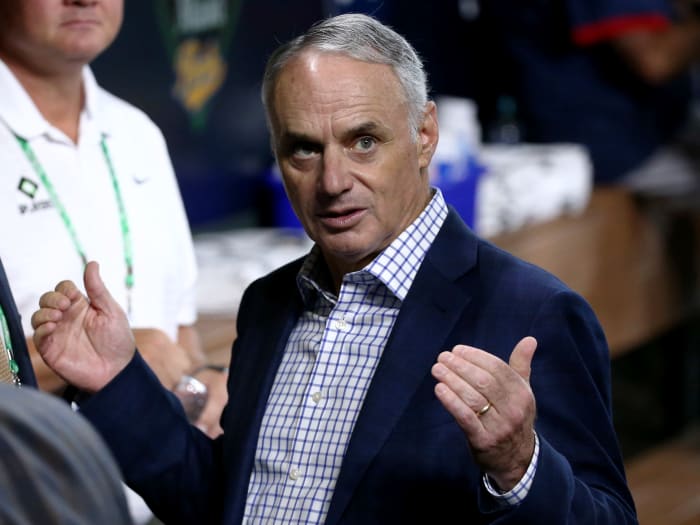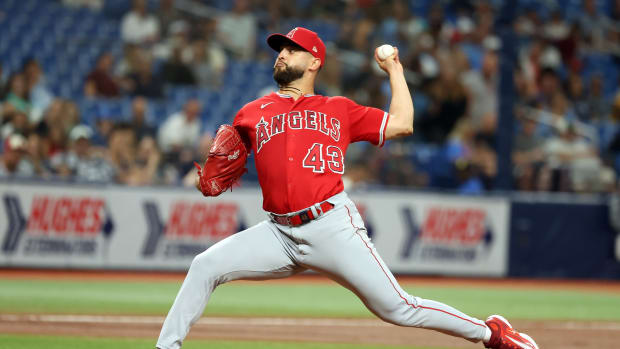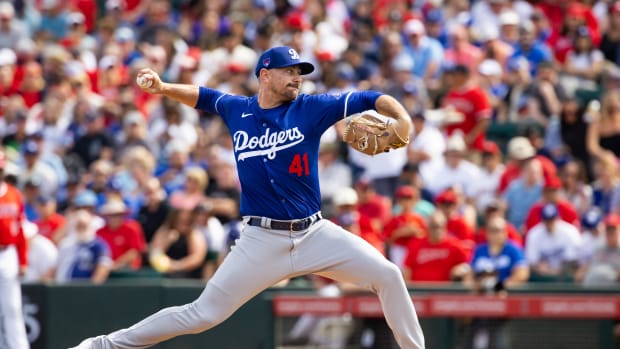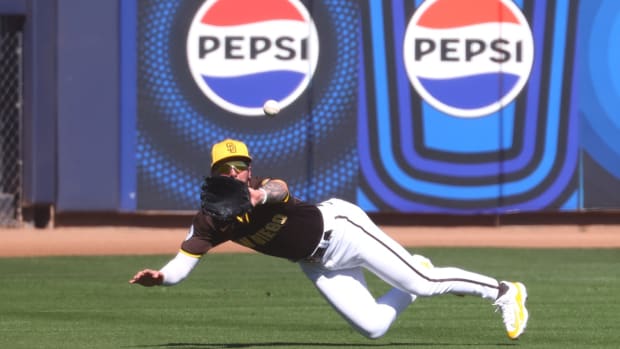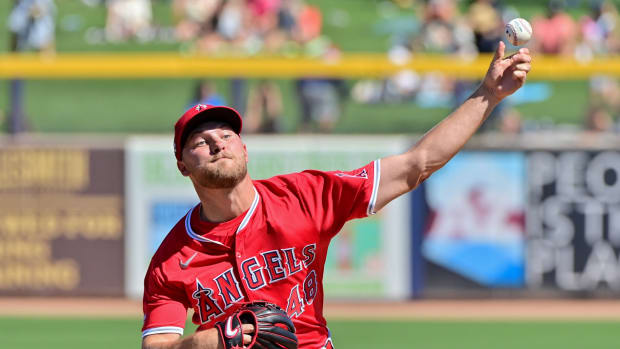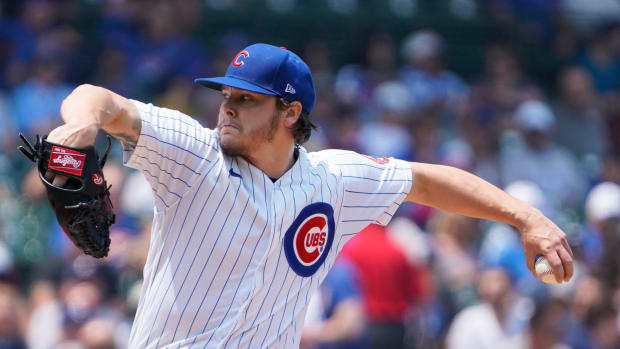Inside Baseball's Dangerous Game of Chicken
Hello, youth of America. Welcome to your first Major League Baseball labor shutdown. It’s been 26 years since the last one.
What’s that? You’re too busy scrolling through your Facebook feed? Checking your Chrome browser on your iPhone or Android? Burning hours away on YouTube? Running killer computer animation games on your iMac? Streaming the latest EDM tracks on your Bluetooth speakers?
You haven’t heard the baseball news? That owners locked out the players with the expiration of the collective bargaining agreement at midnight last night? Understandable, given that we live in this age of the Attention Economy, in which never have so many entertainment options vied for a piece of our finite attention. The singer Ani DiFranco called them “tools of mass distraction.” All of them listed above—all the hardware, all the software, all the headspace-occupying stuff—didn’t even exist the last time baseball shut down.
Here is the better question: Does baseball hear you?
At a time when baseball games have never taken so long with so few hits, when World Series games see a ball put in play about once every five minutes, and when in the past two weeks teams handed free agents $1.75 billion—what California recently set aside to create an affordable housing fund and what North Carolina was ordered to pay to narrow public education inequities—baseball ends 26 years of labor peace.
Today the lockout is a messy procedural move designed to get closer to an agreement. But each day threatens to turn it into something far worse. Owners and players are playing a dangerous game of chicken in a crowded entertainment landscape.
This lockout seemed inevitable for two reasons: 1) Players are talking about massive changes to the structure of the game, and 2) the Dec. 1 “deadline” simply doesn’t put enough pressure on either side to get a deal done, especially the players. No games or salaries are lost.
The true pressure point begins when games are at risk. Given the gap between the two sides, that’s why many observers believe this lockout could extend through December and January.
For the 2022 season to start on time, players need a training camp of at least three weeks (with expanded regular-season rosters, as what happened in 2020 spring training 2.0). That means the real pressure point comes in the first week of March.
For historical reference, go back to 1990. Owners locked out the players in February just before camps were due to open. They settled 32 days later, on March 19—just in time for a three-week spring training and a one-week delay to the regular season. The calendar applied the pressure to get a settlement.
Back then owners were trying to sell the players on a revenue-sharing plan as used in other sports. They told the players that with their plan the average salary, which was $597,537 then, would soar to $770,000 by 1993. The players said no, thanks; we’re good with a free-market system. By 1993 their average salary was $1.08 million. A salary cap is no longer in play.
As part of that 1990 settlement, owners and players agreed to increase the minimum salary by 47%—from $68,000 to $100,000.
Both sides agree the minimum salary needs a boost this time around, too. From 2014 to '21 the minimum baseball salary has grown less than the rate of inflation. Accounting for inflation, players making the minimum were paid more in '14 ($584,000) than in '21 ($570,500).
The minimum is especially important in today’s game as clubs move closer to a gig economy—splitting the work among more players. A record 1,373 players were used in 2021, up 17% in 10 years.
Last season almost half the players (46%) made less than $1 million. More than a third of players earned less than $600,000 (35%). The minimum salary in the NHL is 31% greater than in baseball.
If only this negotiation were as easy as just addressing the minimum salary. The players also want to talk about changing what owners see as three pillars of recent CBAs: free agency, arbitration and revenue sharing among owners.
Players would like free-agent eligibility to be less than the six years that has been in place since Hall of Famer and union chief Marvin Miller smartly won it in 1976. (A's owner Charlie Finley, the eccentric uncle of management, wanted to set everyone free every year. Miller was smart enough to know such freedom would flood the market. He wanted the best players to get on the free-agent market and was happy other owners were predisposed to ignore Finley.)
Players want a more modernized pay system that better rewards younger players. The game had been getting younger—but that may be addressing an outdated narrative. Every year from 2015 through '20 players 25 and younger took 26% to 28% of all plate appearances. This year that number plummeted to 19.7%, the lowest it has been since '04, when the game was just pulling out of the Steroid Era in which players used illegal performance enhancers to keep jobs into their late 30s.
The biggest disconnect between players and owners is how they view the worst teams. The players see teams taking boatloads of revenue-sharing money and sticking it in their pockets, rather than spending it on major league payroll. Last season, for instance, four teams spent less than $70 million on payroll: Miami, Pittsburgh, Cleveland and Baltimore. Five years ago, there were only two teams below that level.
Players want all teams to be as competitive as they are: always trying their best. They want governors in place to guard against what they call “tanking,” such as curtailing revenue-sharing payments to bottom feeders.
Owners view the bottom feeders very differently. This generation of general managers has learned that throwing good money after bad teams to chase incremental wins is a poor return on investment—that you spend when a window of competition opens. Owners see that as smart business. Players see it as manipulative.
For instance, in 2014, a 73-win White Sox team spent $132 million on free agents, including David Robertson, Melky Cabrera and Adam LaRoche. They boosted their payroll 22%. What did it get them? Three more wins and another losing team.
Owners say cutting revenue-sharing funds to clubs would have an opposite effect on player spending—that more than 10 teams would be forced to cut their payrolls.
The utopian sports world where 30 teams have an equal chance of winning does not exist. Teams cycle through good and bad times. The cycles have never been quicker. More than half the franchises, 17, have played in the past 14 World Series. No team has repeated as World Series champion in 20 years, an unprecedented streak.
In his letter to fans, commissioner Rob Manfred said the union brought to the table “a strategy of confrontation over compromise,” armed with “the most extreme set of proposals in their history.”
In a statement the MLBPA described the lockout as the owners’ choice “to pressure players into relinquishing rights and benefits, and abandoning good faith bargaining proposals that will benefit not just players, but the game and industry as a whole.”
The accusations in the statements expose the gulf between the two sides.
The players are arguing the system is broken—in a free-agent market that will blow away the previous record of $2.3 billion spent. Turning 37, Max Scherzer set a record for average annual value ($43.3 million) by 20% over Gerrit Cole and Mike Trout in their prime years.
It’s not just the top of the market. The Blue Jays gave $110 million to Kevin Gausman, a pitcher turning 31 with a career ERA+ of 105, or just above average. The Marlins—the Marlins!—gave Avisaíl García $53 million. The 102-loss Rangers spent more than half a billion dollars just in the past three days.
If you’re an optimist, you focus on issues where the two sides have common ground, such as:
• Raising the minimum salary. If you apply the 47% boost given in the 1990 lockout settlement, the MLB minimum would rise to $839,000.
• Expanded playoffs. The owners would like 14 teams in the field; the players like 12.
• Universal DH. Owners are already on board with this. Players should like the extra pay from 15 more DH slots.
• A draft lottery. The tanking-to-draft narrative is so overblown. Teams are not losing games to grab the No. 1 pick. They are losing games because they are rebuilding or at midseason, after a season has gone sideways, they see a chance to trade present assets for future assets. But sure, if you want to make everybody happy, put the bottom-five teams in an NBA-type lottery.
• Removing compensatory draft picks from free agents. Easily done.
• Raising the Competitive Balance Tax thresholds. It should be done at least to match the growth in revenues and/or inflation.
Arguing about how the Pirates, Marlins, Guardians and Orioles should operate or undoing a 45-year free-agent standard is more difficult. It’s hard to see where the compromise is on issues that are more philosophical than structural. To bridge philosophical differences, you need the pressure of the possibility of losing time on the field.
Meanwhile, the greatest threat to the game gets so little attention: the ever-worsening languid pace of the game. If you want to see what the future of baseball should look like, watch an Arizona Fall League game. With a pitch clock, the game moves briskly. You can take the same game we have today—even with all the shifts and strikeouts and three true outcomes—and play that game with a pitch clock in 2:45 instead of without one in 3:10 and you have a far more attractive game. A modern game.
Somehow, someway, baseball will look different next year. If this work stoppage continues long enough to even threaten spring training, the stands will be less full. People will have moved on to all the tools of mass distraction that did not exist in 1990.
Or it can look different because the owners and players not only realized their sport will become a niche sport if this goes on too long, but also that now, after years of neglect, is the time this game needs to be modernized.
More MLB Coverage:
• Our No-Nonsense, Cut-the-Crap Guide to MLB's Labor War
• Tigers Make Risky, Yet Sensible Choice to Sign Javy Báez
• Rangers' Historic Spending Spree Probably Won't Pay Immediate Dividends
• MLB Free Agency Is Booming Ahead of the Looming Lockout
• The Sure Thing: Why the Rays Extended Baseball's Next Phenom






























